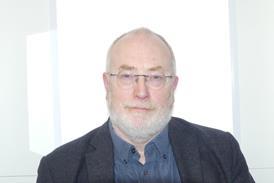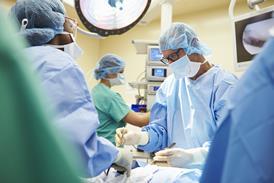The NHS should develop a harmed patients pathway to prevent ‘second harm’ or additional suffering of harmed patients and families who are unsupported, urge Peter Walsh, Joanna Hughes and James Titcombe
“First do no harm, but if harm has been caused, then do no more”
– HPA Restorative Healing Webinar, 2020
The patient safety charity Action against Medical Accidents (AvMA) and the Harmed Patients Alliance (HPA) have launched a campaign for a “harmed patient pathway” to be introduced in the NHS.
This would be a set of specific support measures designed to help harmed patients or their families recover from the trauma of avoidable harm and avoid what is known as “second harm”.
“Second harm” is where additional harm is caused by the way that the patient/family is dealt with and communicated with following avoidable harm in healthcare.
There is increasingly wide recognition of the enormous amount of avoidable harm being caused to patients or their families and the need to improve patient safety to reduce this. However, in our experience there is a huge amount of “second harm” caused.
Although not currently formally recognised, reported and therefore quantified, we believe there is a strong case to say that the most common form of avoidable harm caused to patients and families is the “second harm” caused in the aftermath of harmful events.
A common finding in every major patient safety inquiry in recent years, from Mid-Staffs to the Cumberledge report, has been the additional suffering of harmed patents and families who are unsupported and repeatedly re-traumatised by the very system that harmed them in the first place.
AvMA hears about this frequently from many of the 3,000 people it supports every year, it is the lived experience of the founders and many members of HPA, it is well known amongst networks of harmed patients and frequently communicated by them, and there is a growing body of academic research about this.
Second harm often leads to additional healthcare costs, family problems and breakdowns, and loss of productivity of those who suffer it
When things go wrong in healthcare there has rightly been focus on learning and change to protect future patients, but, we need equal focus on helping those already harmed and this has been consistently overlooked.
Suboptimal recovery and/or avoidable second harm has become an almost inevitable consequence of the way the current system operates. Harmed patients and families routinely do not have their care and support needs understood and met, and also continue to face defensive responses, when truthful answers and explanations emerge only after a prolonged battle involving constantly reliving what happened.
The landscape to be navigated is complex and can be cold, legalistic and isolating rather than caring, supportive and healing.
Our joint personal and professional insights inform our view that whilst there has been a positive focus and investment in recent years on quantifying and reducing other types of avoidable healthcare harm, nowhere near enough energy, focus and investment has been put into understanding and quantifying “second harm” and developing systems and processes to meet the needs of patients and families already harmed from medical error, to enhance recovery and prevent them from being avoidably harmed further.
It should not be this way.
The healthcare system has an ethical and moral responsibility to recognise and acknowledge the scale and extent of the unnecessary suffering caused by this problem and implement changes to end it. There is also a strong economic and strategic argument for addressing this.
Second harm often leads to additional healthcare costs, family problems and breakdowns, and loss of productivity of those who suffer it. It also damages confidence in and the reputation of the NHS and the morale of health professionals.
New pathway
We are calling on the NHS to develop a harmed patients pathway to be implemented across the system and properly funded to ensure equitable access for all.
We are in the process of discussing what support should be available and would welcome suggestions from all stakeholders, and especially harmed patients and families, but from what we know so far this pathway would include:
- A routine assessment of the needs of harmed patients and families reflected in a documented plan of care
- Full and empathetic adherence to the Duty of Candour
- The right to be meaningfully involved in investigations and appropriate support to achieve this
- Access to funded independent, specialist advice and advocacy services
- Access to specialist counselling, for example to help recovery from psychological trauma or injury
- Support that facilitates meaningful involvement in helping NHS bodies improve patient safety
- The opportunity to participate in restorative processes
- Redress/compensation where appropriate without the need to take legal action, and if this is needed, no unfair barriers
AvMA and HPA’s mission is to ensure harmed patients’ and families’ needs are understood and met and to eliminate the type of second harm we describe here. We would welcome anyone to join the campaign.
By working together and collaboratively with a wide range of harmed patients and other stakeholders, our joint ambition is that this project influences real and meaningful change that is long overdue.
Peter Walsh is chief executive of the charity Action against Medical Accidents; Joanne Hughes and James Titcombe are co-founders of the Harmed Patients Alliance


























7 Readers' comments